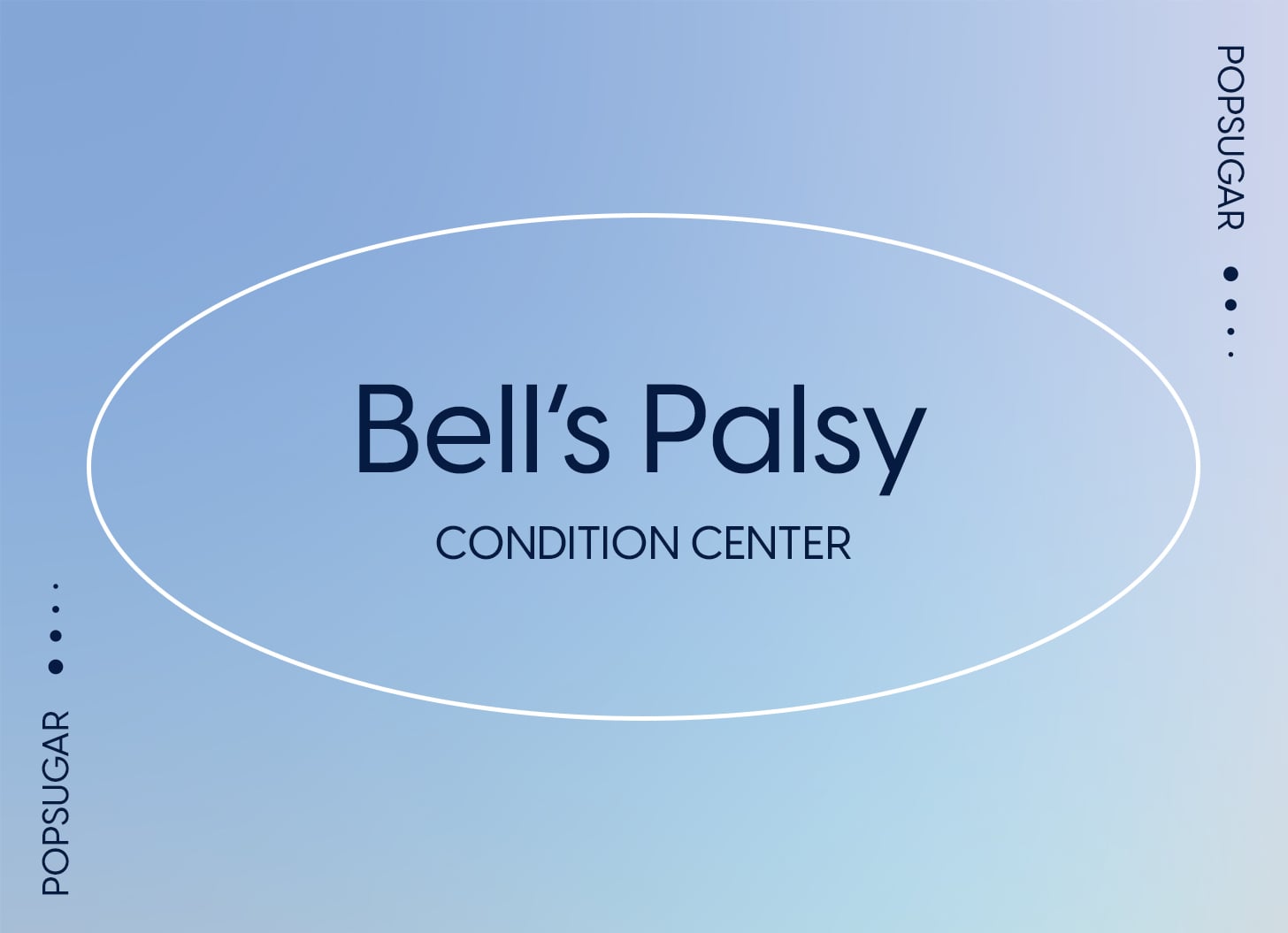Products You May Like
This informational guide, part of POPSUGAR’s Condition Center, lays out the realities of this health concern: what it is, what it can look like, and strategies that medical experts say are proven to help. You should always consult your doctor regarding matters pertaining to your health and before starting any course of medical treatment.
Bell’s palsy is a neurological disorder that affects about 40,000 people in the US each year. The unexpected condition can cause paralysis or weakness on one side of the face, according to the National Institute of Neurological Disorders and Stroke (NINDS). And while it can impact anyone, it seems to be most common in people who are between the ages of 15 and 45.
Bell’s palsy can be scary, and symptoms require careful management. But the signs of this condition can also easily be confused with those of a stroke. Knowing how to spot the difference can be crucial in getting you or a loved one the help you need. Ahead, experts break down all there is to know about Bell’s palsy, what it is exactly, and how it’s treated.
Understanding Bell’s Palsy
“Bell’s palsy is a condition in which the facial nerve — the nerve that controls the muscles of facial expression — becomes inflamed, injured, or even stops working altogether,” says Nicholas Lannen, MD, a neurologist with Corewell Health in Michigan. “This causes facial droop due to weakness or paralysis of these muscles.”
Bell’s palsy usually only causes a temporary facial muscle paralysis, Dr. Lannen says, and most people recover over the span of four to six months. “People are usually fairly young when this happens,” adds Amit Kochhar, MD, director of the Facial Nerve Disorders Program at Pacific Neuroscience Institute in Santa Monica.
Symptoms of Bell’s Palsy
People with Bell’s palsy may experience a range of symptoms. “It’s usually associated with some pain in the ear and increased sensitivity — that proceeds the facial paralysis by a few days,” Dr. Kochhar says. “Patients may feel a little tired and feel like they have bad dental pain.”
After that, someone will experience paralysis or weakness on one side of the face. “You may notice one side of your mouth does not move when you try to smile,” says Ashley Weng, MD, assistant professor of neurology at Rutgers Robert Wood Johnson Medical School. “You may have difficulty closing your eyes or raising your eyebrows. Some patients notice drooling out of one corner of their mouth.”
But, she adds, “not everyone will have the same symptoms, and the severity of the symptoms may vary.” These symptoms usually come on suddenly, Dr. Kochhar says.
Additionally, the NINDS says people with Bell’s palsy may experience the following symptoms:
- Facial pain or abnormal sensations
- Excessive tearing in one eye
- Problems with taste
- Low tolerance for loud noises
- Pain around the jaw and behind the ear
- Trouble eating or drinking
Causes of Bell’s Palsy
“The majority of cases of Bell’s palsy are idiopathic, meaning that we cannot identify a specific cause,” says Dr. Weng. The NINDS says the following are possible triggers of Bell’s palsy:
- A dormant viral infection, like shingles or herpes
- Impaired immunity from stress, sleep deprivation, physical trauma, or an autoimmune syndrome
- A facial nerve infection
- Damage to the myelin sheath, which is the fatty covering that insulates nerve fibers
Being pregnant and having preeclampsia, obesity, hypertension, diabetes, and upper respiratory conditions also raises the risk of developing Bell’s palsy, Dr. Kochhar says.
Most Effective Treatment Options For Bell’s Palsy
There is no specific test for Bell’s palsy, but your doctor will want to rule out stroke, infections,Lyme disease, and inflammatory conditions first, Mayo Clinic says.
There is also no set treatment for Bell’s palsy, and most people with the condition recover fully in a few weeks with or without treatment, Dr. Kochhar says. “Treatment varies depending on severity and the duration of the symptoms,” Dr. Weng says. “It is important to seek out a medical professional as early as possible, as some treatments are only beneficial during the initial stages of Bell’s palsy.”
Your doctor may give you medications like corticosteroids to reduce swelling of the facial nerve, Dr. Kochhar says, noting that these may work best if they’re started within a few days of your symptoms starting. “The goal of the steroids is to lessen the inflammation of the facial nerve and to hasten healing and recovery,” Dr. Lannen says. “Sometimes — but not always — your doctor might also prescribe an antiviral drug such as acyclovir.”
If you have eyelid weakness or drooping, your doctor may also recommend eye drops to keep your eyes moist. “You may be asked to tape your eye closed at night to prevent injury to the cornea,” Dr. Lannen says. If your eye is impacted, it’s important to take good care of it. “You could potentially scratch it, injure it, or go blind,” Dr. Kochhar adds.
Fortunately, the vast majority of patients “will make a complete recovery within a few weeks to a month,” he says. However, some people may have long-standing nerve damage and trouble making a symmetrical smile or symmetrical facial movements.
“Bell’s palsy is frightening and frustrating, especially when it is early in its course,” Dr. Lannen says. “That said, most people have full or near-complete recovery of their facial paralysis.”
If you suspect that you have Bell’s palsy, it’s important to seek care immediately. Not only do you need to rule out serious conditions like stroke, you can also start treatment to help get you on the path to recovery ASAP.
Image Source: Photo Illustration by Aly Lim
